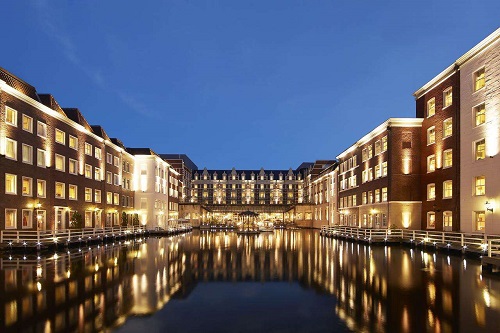
STR said that, for the year-to-date September 2017, several key markets recorded double-digit RevPAR increases, including Budapest (+18.4 percent), Warsaw (+11.3 percent), Kiev (+24.1 percent), Lisbon (+20.0 percent), Madrid (+19.1 percent) and Barcelona (+15.1 percent).
The comments came as Host Hotels & Resorts’ CEO Jim Risoleo told analysts that he expected supply to pick up in 2018 in the U.S., “and probably level out in 2019, and then we should start to see a decline. The lending environment has got much more difficult for developers to build new hotels. We're seeing projects being delayed and projects being put on the shelf.”
As yet, performance in Europe was outstripping that in the U.S. for the global operators, even taking out of consideration the natural disasters recorded in the U.S. over the period.
UK Keeps Growing
One region that is attracting both guests and investors is the UK where, despite the decision to leave the EU, business is booming. “London has seen demand growth every month since last November, with the pound devaluation boosting both international and domestic tourism,” Rossmann said.
This has translated into deals, Marc Finney, head of hotels & resorts consulting at Colliers International, told HOTEL MANAGEMENT. “The UK is hot at the moment, which may be why people are seeing it as a good time to buy. Within the hotel sector people are looking at the UK more than mainland Europe, we’re seeing almost excessive demand.
“Some of it is the fall of Sterling and some of it is that, for Asian investors, who are only getting 2 percent to 3 percent returns at home, 5 percent is attractive, as long as the underlying assets are strong. We’re even seeing German investors coming over and doing forward-funding deals, which you didn’t see five years ago. We’re in the phony war still. There have been some negatives in terms of inflation and some positives in terms of more people coming here—the news in the hotel sector is quite positive.”
“Year-over-year demand increases appear to be waning as Sterling has risen, and incoming supply growth could put pressure on London’s occupancy levels in the near future,” Rossmann warned.
This was shown to be the case in October, with STR reporting in the city down 1.9 percent to 83.4 percent. ADR grew 2.3 percent to £152.27 and RevPAR increased 0.4 percent to £126.96.
This would be the lowest October occupancy level in London since 2006, but the second-highest ADR for any October since 1994. Because demand grew year over year, STR analysts attributed the decline in occupancy to the “significant” increase in supply.
It is this supply growth which could see the UK following the path of the U.S., compounded by the decisions of Brexit catching up with the UK in the form of waning profits and issues of staffing. With mainland Europe, led by France and Germany, planning greater unity and already seeing GDP growth outstripping the UK, those German investors are likely to return home.









Service Hotline
Work Time:Mon-Fri 9:00-18:00
UTC+8

Sinoexpo Digital Platform
Copyright 2006-2024 Shanghai Sinoexpo Informa Markets International Exhibition Co., Ltd. All rights reserved
沪ICP备05034851号-77
 沪公网安备 31010402000543号
沪公网安备 31010402000543号